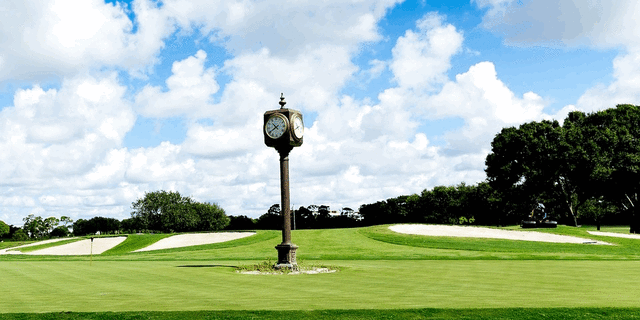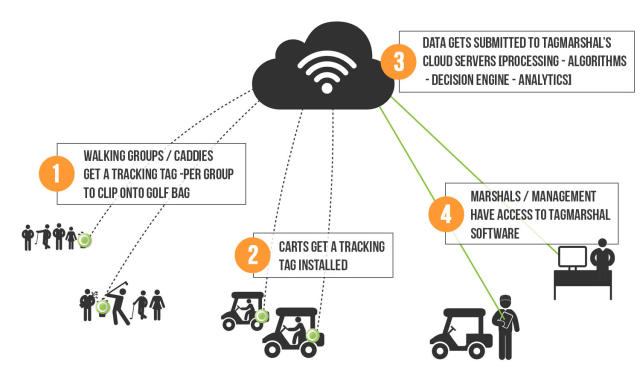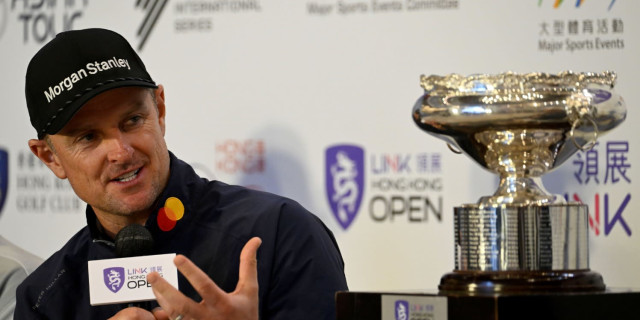
Technology Aiding Pace of Play to Stop Slow Play
Slow Play is a subject that graces many an after round discussion usually in the clubhouse bar. My club and society have all adopted the Ready Play guidelines and things have improved slightly from last season.
I was drawn back to an excellent article written by Josh Carr on Golfshake. He analysed the Golfshake survey in particular in relation to the issue of Slow Play.

A recent USGA survey replicated the results of Golfshake’s own and it is clear that a failure to police slow play has a detrimental effect on a golfer’s experience. These factors include:
- A Reduction in player enjoyment and satisfaction ratings.
- Frustrated customers
- Reduction in the time the golfer has to visit linked facilities such as the 19th hole etc.
- Less likely to become repeat customers
- More likely to leave membership if frustrated with course management.
There are some great point’s made by the author and other subscribers who added to the conversation.
For me the most important factor identified was the number of golfers who played less golf as a result of the time issue involved in playing golf.
He also flagged the inconsiderate or unknowing golfer who considers it a crime to allow a faster group through. Challenges and interventions by Marshalls of slower groups are difficult for both parties involved.
Innovative methods involving shorter versions of the game are interesting but as something of a traditionalist I prefer the full fat, full sugar, version of 18 holes of medal play to test my current golfing prowess.
On a recent review trip to Mallorca I was very pleased to see technological advances being introduced to deal with the problem at its source. Slow play is caused by slow golfers.
Golf Alcanada is a great facility with many innovative approaches to the customer experience but I was really impressed by the real time monitoring of slow play using a system called Tag Marshal.
Speaking to the Course Marshalls they loved the system as it allowed them to make informed and appropriate interventions to keep the pace of play up to the benefit of everyone on the course.
Technology Helping Pace of Play
The heat maps showed who was regularly slow as opposed to a group struggling on one particular hole. This meant that any intervention was supported by incontrovertible evidence and advice and education could be given to specific groups and individual golfers.
From a course operators perspective they are also able to get much better use of the facility by increasing the number of tee times without diminishing the customer experience by play being very slow. In my view this is a win /win for all concerned.
I began my research and realised I had hit onto the early days of a very effective product that was being introduced at some very high profile venues across the world.
If it is good enough for Carnoustie, Erin Hills and Whistling Straights it has definitely got some merit. With this in mind I asked the company to provide an explanation of the system and its benefits.

Tagmarshal Optimizing Pace at Europe’s Most Prestigious Courses
Pace-of-play has long been a key factor determining player experience. According to a recent USGA survey, 74% of golfers believe pace is “critical” to their enjoyment of a round. Slow play can hinder rhythms, deter repeat customers and lead to golfer dissatisfaction. With an abundance of European links courses covered in fescue, this becomes even more vital.
Here to save the day is Tagmarshal – a pace-of-play and revenue-optimizing system used globally by golf courses, country clubs and resorts. Tagmarshal empowers courses to optimize their pace, routinely enhancing average round times by 14-17 minutes. This leads not only to an improved golf experience, but increased revenue, both by adding capacity on busy days, and by expediting those rounds, ensuring golfers have more time to visit the pro shop or 19th hole after a stellar round.
High-profile courses across Europe have adopted its technology, including Carnoustie (2018 Open Championship) and Ballybunion (Irish Open). Also proven in the U.S. at Whistling Straits (2020 Ryder Cup), Erin Hills (2017 U.S. Open), Valhalla (2014 PGA Championship) and Kiawah Island (2012 PGA Championship), the platform is trusted at many golf destinations around the world.
So how does the software work?
The system, which uses discreet data-transmitting tags clipped to golfers’ bags or installed into carts, measures all player movement and preemptively offers solutions to alleviate bottlenecks and other pace obstacles via its proprietary algorithms.
With a wealth of intuitive and dynamic information, courses provide positive, non-confrontational player assistance and improve their per-hole and overall goal times, while streamlining field management accuracies and processes.
At private facilities, data on individual golfers’ pace also allows courses to incentivize faster players or offer personalized support for those who can improve.
“As links courses, it is especially vital for us to accurately manage round times,” says Vari McGreevy, General Manager of Ballybunion. “Tagmarshal’s innovative technology enables informed decisions, ultimately accelerating field flow for even better on-course experiences.”
Paving the way for increased participation and growth of the game, the benefits are countless. Not only are clubs able to retain members, but they also expand through a strong pace-of-play reputation.
After deploying its platform, courses seize pace as an asset to their operation and golf experience.
Is this the answer to issues with slow play?
I am not sure that this is the overall solution to the problem of slow play but it is definitely a real move forward to ensuring that all players get the chance to enjoy the game at a pace that all enjoy.
Better education has its place and this equipment allows the course managers to identify those who need that education. That has got to be to the benefit of all players and the game as a whole.
Let me throw this challenge out to the golfing authorities.
Why not trial the use of this equipment at a high profile event during a professional tournament?
Professional golfers set the standard for golfing etiquette at all levels. The referees could use the heat maps to establish without doubt who was causing a hold up or delay and then they could take appropriate action in accordance with the existing rules.
I recently played in the European Tour Seniors Italian Open Pro am event presented by Villaverde Resort golf club, Udine, Italy. Did I play slower do to increased pressure? Possibly. I do know one thing though, my pace of play will always take into account my playing partners and other groups on the course as that is a crucial part of the game and its etiquette.
Related Articles:
What do you think? post your thoughts and feedback on the Golfshake comments: jump to comments here.
Tags: slow play









